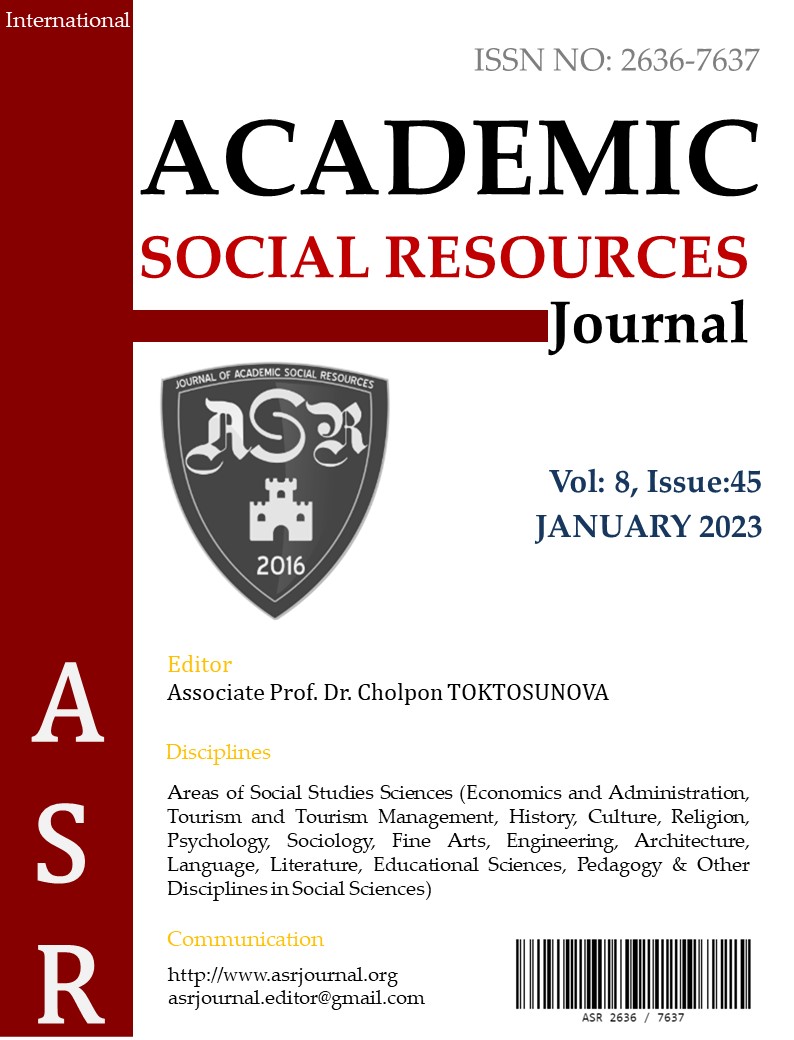Author :
Abstract
Makalenin konusunu, Kemal Uludağ’ın, sanatçı kimliği ve eserleri ile birlikte, çağdaş Türk seramik sanatı içindeki yeri oluşturmaktadır. Araştırmada sanatçının imzasını taşıyan seçilmiş seramik eserlerin, biçim dili ve ikonografik çözümlemesi yapılmıştır. Eserlerde görülen teknik beceriler ve sanatsal ifade tercihlerinden yola çıkarak, Uludağ’ın sanat üslubu ve Türk seramiğine getirdiği yenilikler saptanmaya çalışılmıştır.
Anadolu’da, Neolitik Dönem’den itibaren insan hayatında yer alan seramik, ait olduğu toplumların yaşam biçimine göre şekil alarak ve gelişerek günümüze ulaşmıştır. İşlevsel mimari ögeler ve yardımcı gereçler olarak insan hayatında yer alan seramik, 20. yüzyılın ortalarında, işlevsellikten sıyrılarak, resim ve heykel sanatçıları tarafından dikkat çeken, duygu ve düşüncelerin somutlaştırılmasında kullanılan bir malzeme niteliği kazanmıştır. Seramik kullanımında, Avrupa merkezli gelişen bu yenilikle başlayan seramiğin çağdaşlaşma süreci, Türkiye’ye de yansımış ve Anadolu’da köklü bir geçmişe sahip seramik üretimi, yeni bir çehreye bürünmüştür.
1950’li yıllarda, Avrupa ile paralel bir gelişim gösteren çağdaş Türk seramik sanatçıları tarafından, işlevsel yönden bütünüyle uzaklaşmış, tamamen sanatsal ifadelerin somutlaştırılmış biçimleri olarak seramik eserler üretilmeye başlamıştır. Çağdaş Türk seramiğinin serüveni, ülke içinde ve dünya çapında ses getiren bir yaratıcılık ve üretkenlik gösteren seramik sanatçıları sayesinde günümüzde de devam etmektedir. Bu sanatçılardan biri olarak Kemal Uludağ, özgün sanat dili ve irdelediği konularla, hem Türk toplumunun duygularına hem de seramik sanatına büyük katkılar sağlamaktadır.
Keywords
Abstract
The subject of the article is Kemal Uludağ’s place in contemporary Turkish ceramic art, together with his artist identity and works. In the research, the format language and iconographic analysis of selected ceramic works, bearing the artist's signature, were conducted. Based on the technical skills and artistic expression preferences seen in the works, the innovations that Uludağ brought to the art style and Turkish ceramics were attempted to be determined.
Ceramics, which has taken place in human life in Anatolia since the Neolithic period, has reached the present day by taking shape and developing according to the lifestyle of the societies it belongs to. Ceramic, which takes place in human life as functional architectural elements and auxiliary materials, has become a material that draws attention by painting and sculpture artists in the middle of the 20th century and is used to embody emotions and thoughts, by getting rid of functionality. The modernization process of ceramics, which developed with this European-centered innovation in the use of ceramics, was also reflected in Turkey, and ceramic production, which has a deep-rooted history in Anatolia, took on a new face.
In the 1950s, ceramic works began to be produced by contemporary Turkish ceramic artists, which developed in parallel with Europe, completely moved away from the functional aspect, and completely embodied forms of artistic expressions. The adventure of contemporary Turkish ceramics continues today, thanks to ceramic artists, who show creativity and productivity in the country and around the world. As one of these artists, Kemal Uludağ makes great contributions to both the feelings of Turkish society and the art of ceramics with his unique art language and the subjects he examines.
